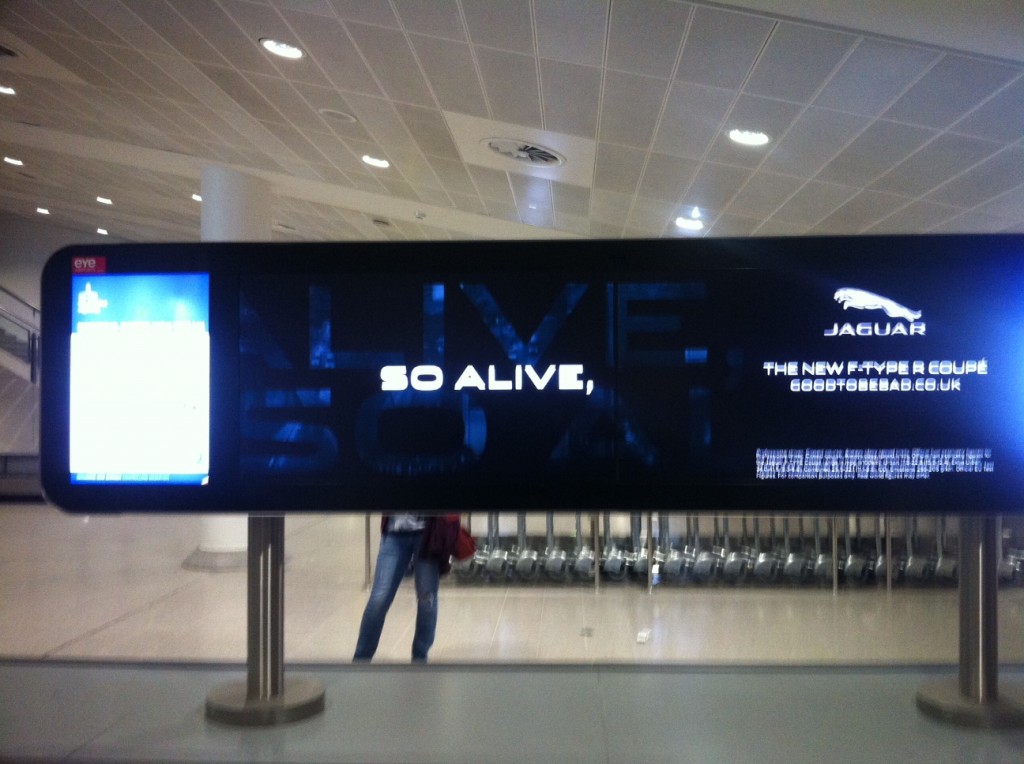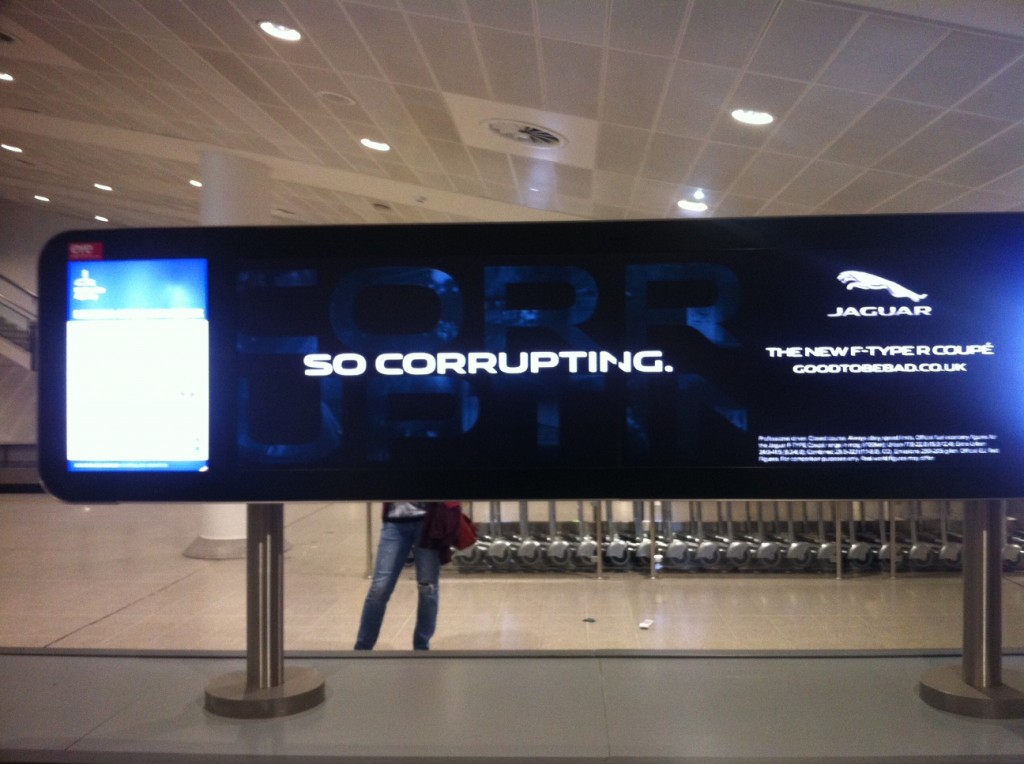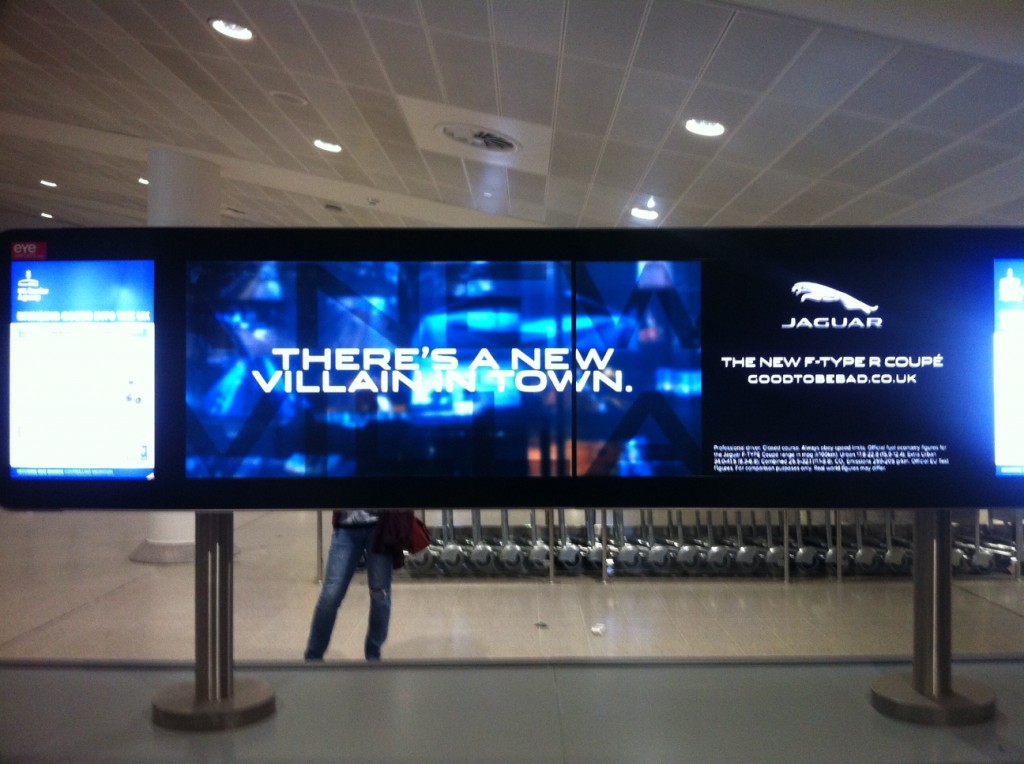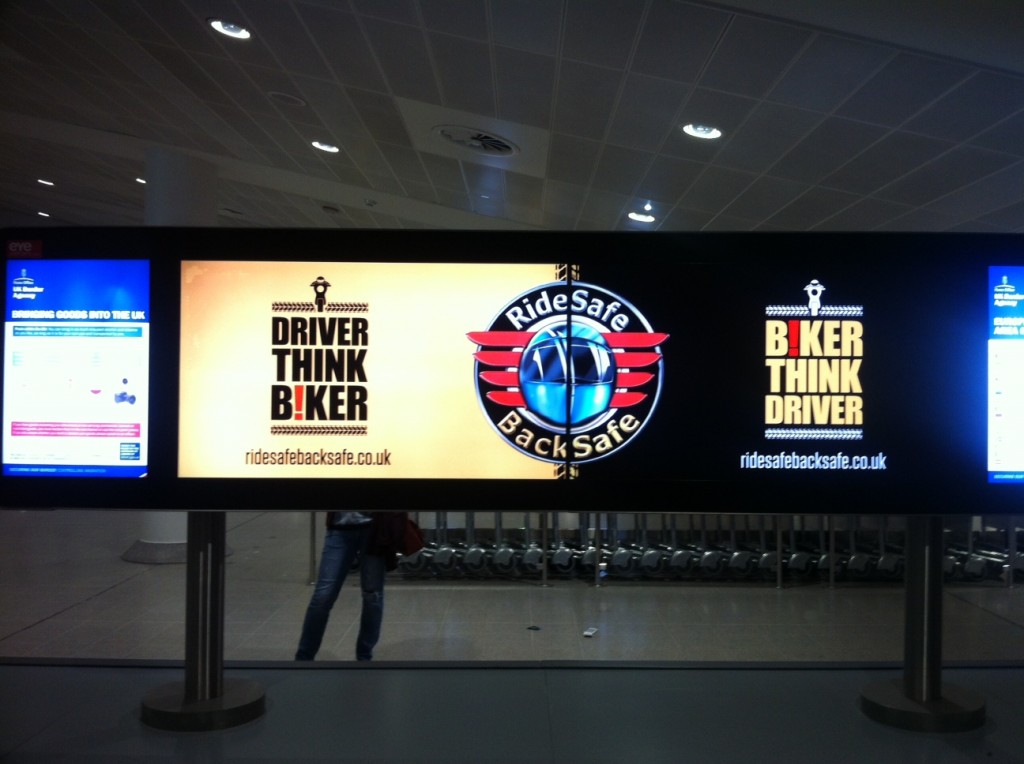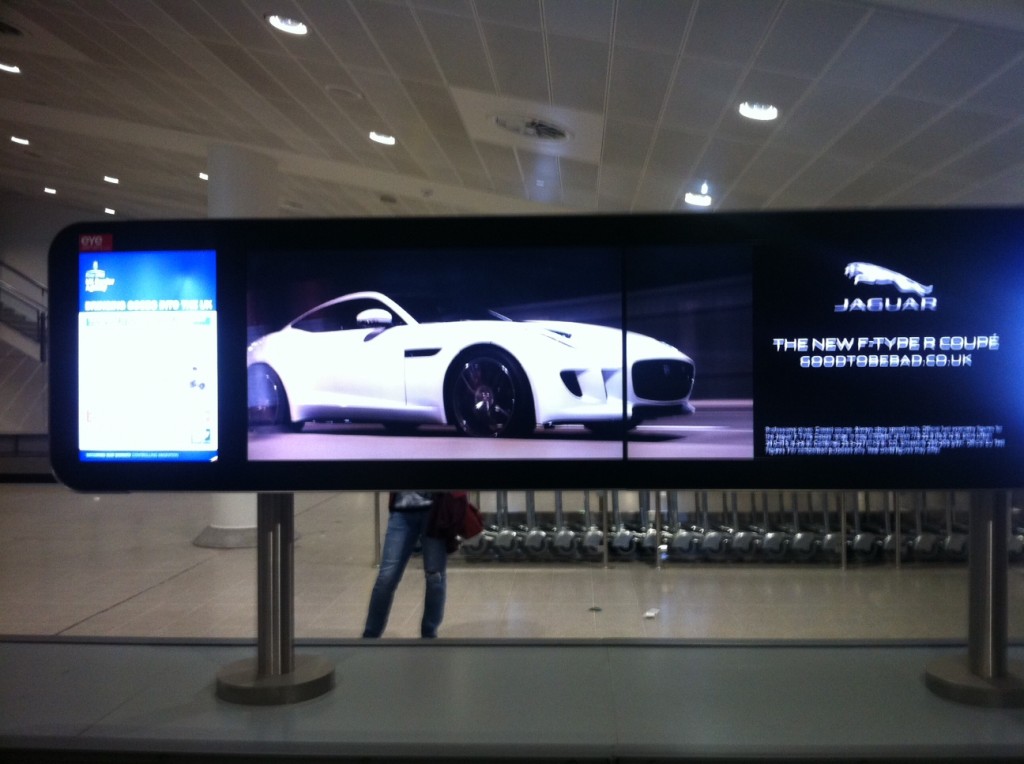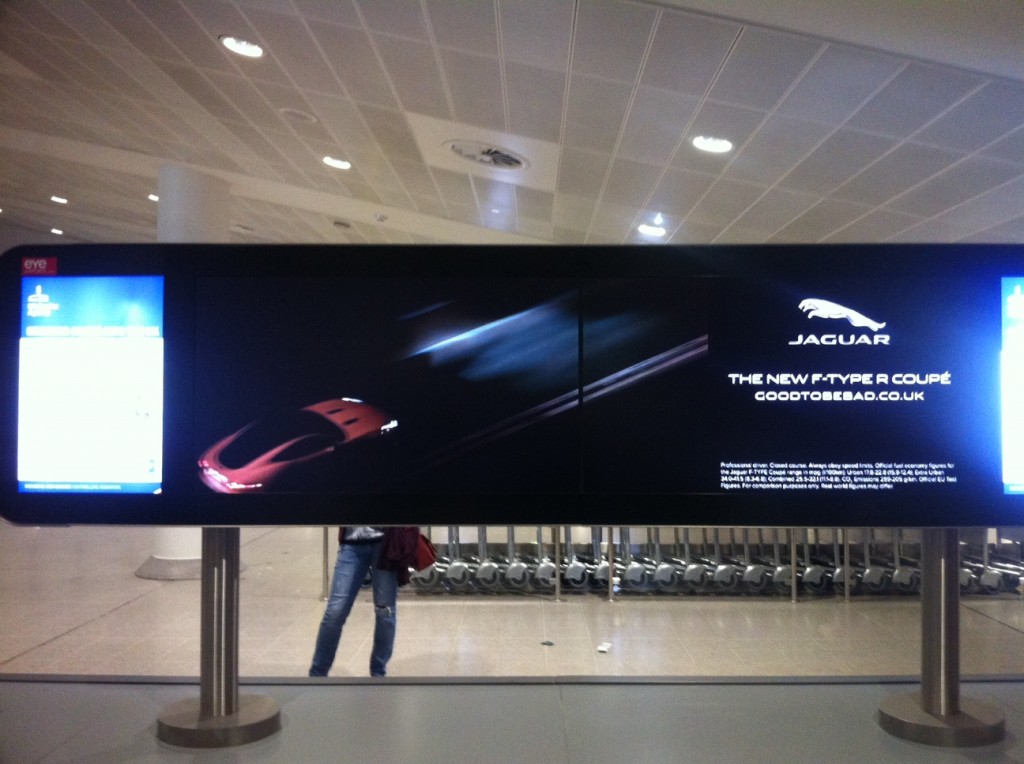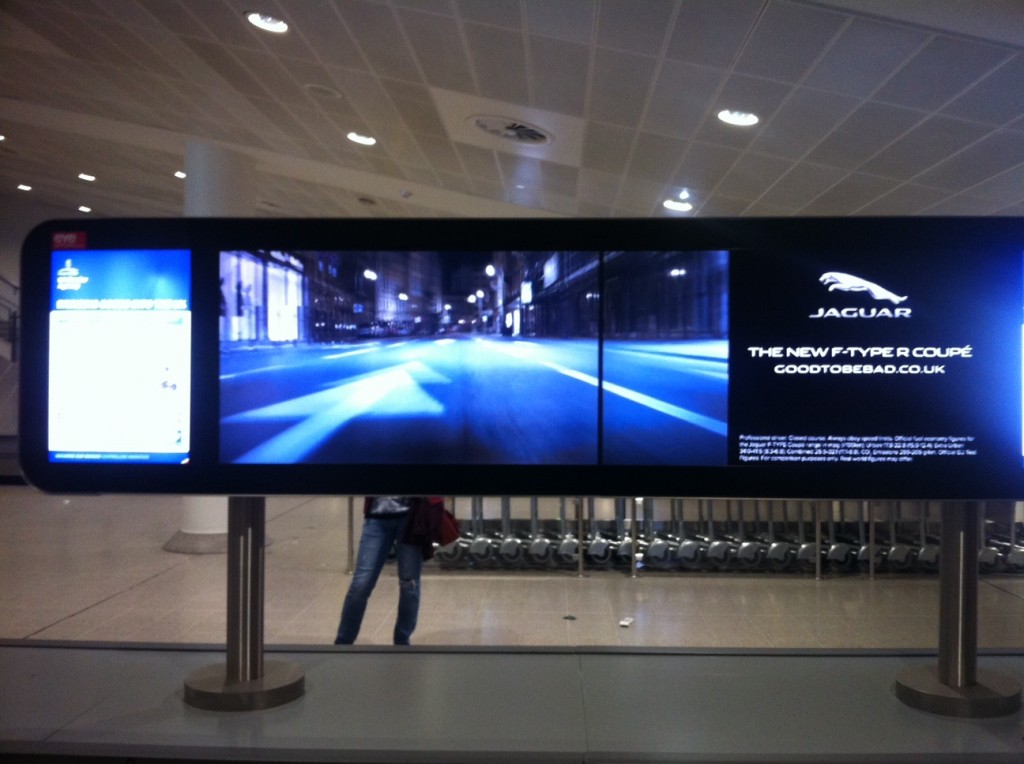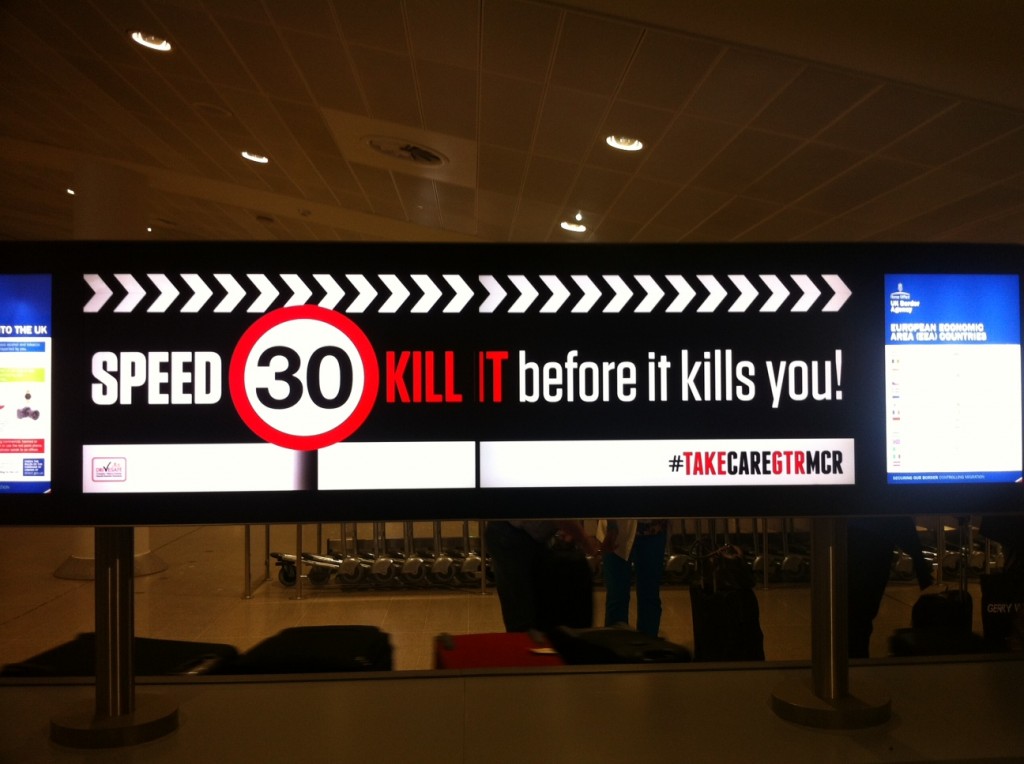At Manchester airport recently – where you pick up your luggage – there was a screen showing an advert for an new Jaguar.
It went:
There is a new villain in town. So this ad is designed to make me want to go fast and be bad and dangerous and break the law.
Then comes this ad:
That makes me want to drive slowly and attentively and responsibly.
The Jaguar ad then repeats, making me feel villainous, with its high speed race through a city at night:
And on comes a new careful driving ad.
And so it goes on. More speeding:
and then more safety:
I presume that none of the directors of Jaguar have lost a child in a road accident.
I wondered what impact this contradictory advertising has on the minds of people. What kind of neural pathways are created when simultaneous, contradictory messages are beamed at your brain?
Contradictory messages are nothing new: growing house prices are good and bad, we should spend and we should save, we should borrow and not get into debt, energy should be cheap and it should be expensive and so forth. That reflects how complicated things are.
However, to issue contradictory messages does not absolve you of responsibility for each of the separate messages. Notwithstanding the hypocritical safety ads, the courts should ascribe personal liability and responsibility to the directors of the company if someone buys a Jaguar, goes out into the street at night and knocks over a child on the road. If advertising didn’t work, they wouldn’t do it.
20180822 Update: the ad is banned!
http://www.theguardian.com/media/2014/jul/16/jaguar-ad-tom-hiddleston-banned-youtube

